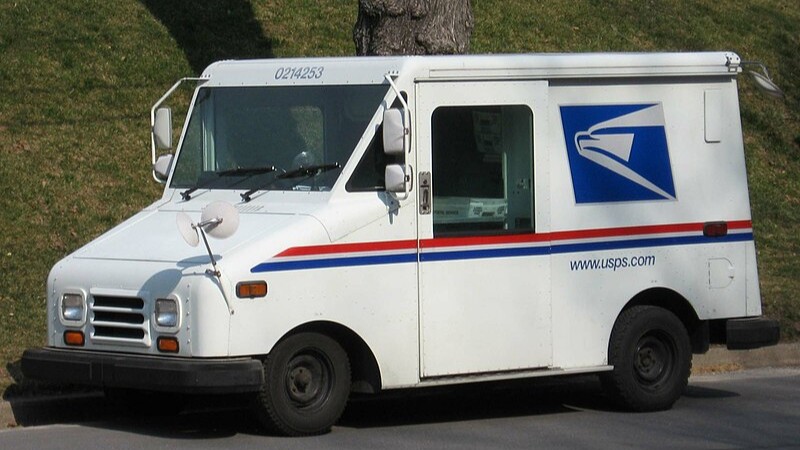Wildfires have always been a challenge for California, but their growing frequency and severity have turned them into a breeding ground for scams and fraudulent activities. Each year, fires devastate large areas, displacing families and leaving communities struggling to rebuild. The recent wildfires in Los Angeles County, with damages projected to reach a quarter of a trillion dollars, have underscored the significant risks associated with the recovery process, where billions of dollars in aid are at stake.
As recovery efforts move forward to rebuild homes and infrastructure, a wave of scams and fraudulent schemes threatens to undermine these efforts. The influx of funds has created opportunities for bad actors to exploit the system, targeting both individuals and government resources. Los Angeles District Attorney Nathan Hochman, along with other agencies, is working to combat these threats, focusing on monitoring and prosecuting those who attempt to divert recovery funds through fraudulent claims or unscrupulous practices.
Homeland Security’s Eddy Wang also emphasized the vulnerability of recovery efforts to fraud, noting how scammers often seize on the chaos following disasters. Whether through fake charities, fraudulent contractor schemes, or inflated insurance claims, these scams not only siphon critical resources but also delay aid for those who genuinely need it. Ongoing investigations are crucial to identifying fraudsters and ensuring that recovery funds are used responsibly to support wildfire victims.
Key Takeaways
California’s recent wildfires have led to a surge in scams and fraudulent activities targeting wildfire victims and relief efforts.
- Scammers are exploiting the chaos following disasters through fake charities, fraudulent contractor schemes, and inflated insurance claims.
- Investigations into the origin of wildfires often reveal vulnerabilities in contracting processes and misuse of emergency funds.
- California is investing in preventative measures such as controlled burns, vegetation management, and stricter building codes to reduce the risk of future wildfires.
Investigating the sparks
Determining the origin of a wildfire is a meticulous and time-intensive process, but it is essential for both accountability and prevention. Investigators often start at the site where the fire began, examining burn patterns, debris, and other physical evidence to determine its cause. In many cases, power lines, malfunctioning equipment, or human actions are to blame.
In the wake of the Los Angeles County fires, investigators employed advanced tools like drones and satellite imagery to analyze fire behavior. These technologies, combined with traditional methods such as ground-level inspections and witness interviews, help authorities piece together how a blaze starts and spreads.
Chris Currie, director of the Government Accountability Office’s Homeland Security and Justice Team, explained how investigations often reveal vulnerabilities in contracting processes and misuse of emergency funds. He added that in disaster recovery efforts, accountability is often challenged by instances of fraud involving high-profile officials and public servants.
Billions in aid at risk
As billions of dollars in government assistance flow into Los Angeles County, concerns about fraud and misuse grow. History shows that disasters often create opportunities for exploitation, as efforts to quickly allocate aid leave gaps for bad actors to exploit.
So far, federal authorities have set aside roughly $750 million in relief funds, including $33 million already distributed to residents impacted by the fires. Another $550 million has been allocated to the U.S. Army Corps of Engineers for critical recovery projects including those in the Palisades and Eaton fire zones.
The state of California has committed an additional $2.5 billion to wildfire recovery. These funds aim to provide shelter for evacuees, remove hazardous waste, and expedite building permits. Officials in Los Angeles County are aware of the risks. Homeland Security, along with agencies like the FBI, the ATF, and Hochman’s office, has formed a Joint Regional Fire Crimes Task Force to investigate fraudulent claims and misuse of funds.
Rebecca Shea, director of the U.S. Government Accountability Office’s forensic audits team, pointed out that disasters amplify risks of fraud to ‘perfect storm’ levels due to the urgency of aid distribution and the lack of documentation many survivors face. Agencies are relying on data monitoring and whistleblowers to detect fraudulent activities as recovery progresses.
Human and financial toll
Wildfires not only destroy property but also take a significant emotional toll on the people they affect. Thousands of families in Los Angeles County have been displaced, with many forced to rely on temporary shelters or assistance from local nonprofits. The cost of rebuilding homes and infrastructure adds to the financial strain, with skyrocketing prices for construction materials making it even harder for survivors to recover.
LA wildfire Phishing Scams:
If you see anything like "Archewell Foundation" do not fall for it.
Only 20% goes to the victims. The rest goes for private jets, vacations, and Temu wigs for Meghan.
Samaritan's Purse would be a better option.@people @nypost @USATODAY pic.twitter.com/ehEnVzIL6M
— Jews 4 Trump (@Teranova2112) January 13, 2025
The total damages from the recent wildfires are estimated to reach $250 billion, encompassing destroyed properties, economic losses, and environmental impacts. Insurance companies have already been inundated with claims, creating delays and frustrations for homeowners waiting for payouts. Fraudulent claims add further complications, diverting resources and delaying relief for legitimate victims.
Despite the challenges, communities have come together to support one another. Local organizations provide food, water, and temporary housing, while volunteers work to clear debris and rebuild damaged neighborhoods. The resilience of those affected is a powerful testament to the human spirit, but the road to recovery remains long and uncertain.
Legal battles and accountability
Legal disputes often emerge in the aftermath of wildfires, as victims and local governments seek compensation for damages caused by the disasters. Lawsuits frequently involve determining liability for fires, which can include holding entities accountable for their role in ignition or poor mitigation practices. These cases often take years to resolve, leaving survivors in a prolonged state of uncertainty as they await settlements or financial relief.
Meanwhile, insurers face mounting pressure as wildfire claims surge, making it increasingly difficult for residents in high-risk areas to secure affordable coverage. Some homeowners experience rising premiums, while others are unable to obtain insurance altogether.
These challenges place additional burdens on individuals already struggling to recover from the devastation. Calls for systemic reforms continue to grow, emphasizing the need for better risk management, clearer accountability, and stronger protections for affected communities.
Addressing the root causes
While recovery efforts focus on rebuilding, addressing the underlying factors that contribute to wildfires is equally important. Prolonged drought conditions, rising temperatures, and overgrown vegetation create a perfect environment for wildfires to ignite and spread. Urban development in fire-prone areas further exacerbates the issue, putting more lives and properties at risk.
In the aftermath of natural disasters, scammers are quick to exploit survivors.
If you’re impacted by the LA fires, be vigilant:
– @fema will never charge fees for disaster aid
– Always ask for ID from inspectors
– Verify building contractors
– Report fraud to 866-720-5721— Adam Schiff (@SenAdamSchiff) January 16, 2025
To mitigate these risks, California is looking to invest in preventative measures such as controlled burns, vegetation management, and stricter building codes. These efforts aim to reduce the fuel available for fires and create safer communities. Public education campaigns have also emphasized the importance of fireproofing homes and preparing evacuation plans, but more work is needed to implement these strategies on a larger scale.
Toward a safer future
The devastation caused by wildfires highlights not only the need for better prevention and recovery strategies but also the urgency of addressing fraud and scams that often emerge during these crises. While advanced technologies like predictive modeling and early warning systems can help authorities respond more effectively, they cannot prevent the exploitation of disaster recovery funds. Stronger regulations and vigilant monitoring are essential to protect these resources from misuse and ensure they reach those who truly need them.
A critical focus must be on safeguarding recovery efforts from common scams such as fraudulent contractor schemes, fake charities, and inflated claims that delay aid and exacerbate the suffering of wildfire survivors. Ensuring accountability in how recovery funds are distributed and spent is essential to helping communities rebuild and restore their lives.
The wildfires in Los Angeles County have not only tested the resilience of affected communities but also exposed vulnerabilities in recovery systems. With billions of dollars at stake, California must prioritize fraud prevention alongside rebuilding efforts to protect victims and prevent bad actors from profiting off tragedy. Lessons from each disaster must inform future efforts, ensuring a more secure, fair, and effective recovery process.














